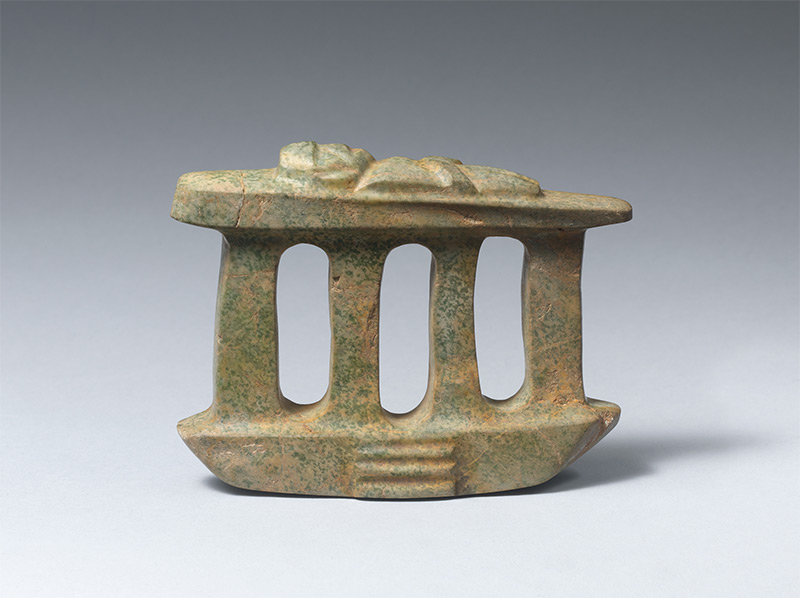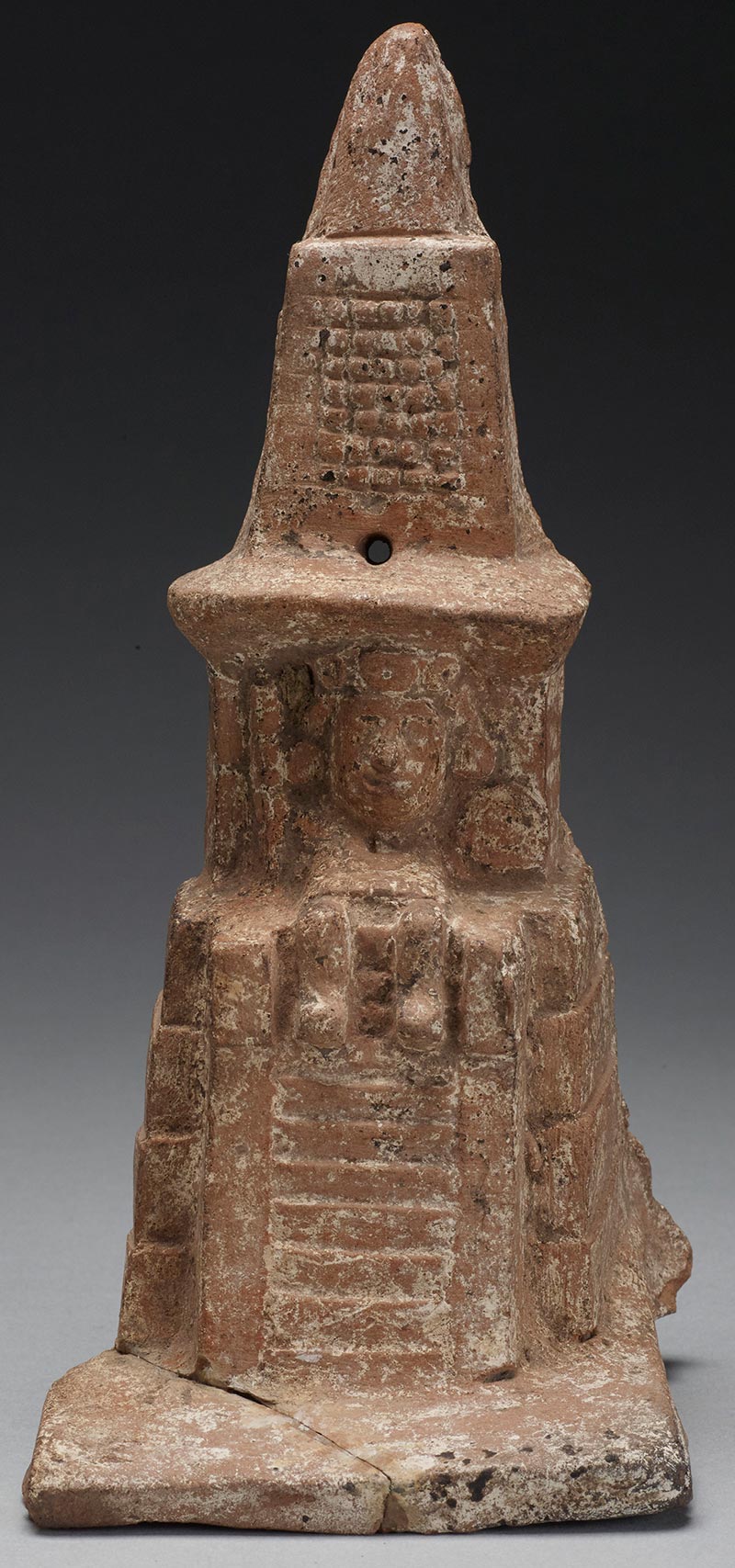Two Mezcala architectural models from the Vilcek Foundation collection are currently on display at the Metropolitan Museum of Art’s exhibition Design for Eternity: Architectural Models from the Ancient Americas. Created by the native peoples of Guerrero, Mexico, between 100–800 AD, the small stone sculptures, ranging from 2 to 8 inches tall, depict what are believed to be religious temples. Their function is not known with certainty, but they are presumed to have been votive objects, left for or buried with the deceased.

“Mezcala Four Column Temple with Recumbent Figure”
Guerrero, Mexico, 200 BCE–500 CE
Greenstone
H- 3 3/4 x W- 4 1/2 x D- 3/4 in.
The Jan T. and Marica Vilcek Collection
The practice of creating miniature models of buildings was widespread throughout the pre-Columbian Americas. As curator Joanne Pillsbury states in the exhibition’s accompanying publication, these models can be better understood as works of art or ceremonial objects than as ancient blueprints: “Precolumbian architectural models were instead a distillation of ideas about the symbolic significance of architecture—as the embodiment of political power, for instance, or as the focus for ritual practice.” The artistic qualities of the models are brought to the forefront in the small but expertly curated exhibition. Organized chronologically and by geographical origin, Design for Eternity allows viewers the opportunity to see the similarities, and more importantly, the differences among an artistic tradition that lasted more than 2,500 years.

“Temple Model”
Aztec culture, Mexico, A.D. 1400–1521
Ceramic
H- 7 in.
Princeton University Art Museum, Promised bequest of Gillett G. Griffin
Image: Princeton University Art Museum / Art Resource, NY
The “Mezcala Four Column Temple with Recumbent Figure” from the Vilcek Collection shares little in common with the “Temple Model. Aztec Culture” from the late 15th to early 16th century (also on display in the exhibition). The Mezcala temple has been painstakingly carved from hard stone into an almost-abstract geometric representation of the façade of a temple. In contrast, the Aztec model, which was made from a mold in ceramic for the state-sponsored religion, is thought to be miniature representation of a prominent temple. Yet both works use architectural features to great effect: A solemn object, the Mezcala temple’s prominent pillars emphasize the distance between the earthly ground and the single presumably deceased body that lies on top. The Aztec model uses specific details, such a staircase characteristic of Postclassical Aztec temples and circular engravings to replicate ceremonial skulls, to give its owner a glimpse of a faraway divine place he or she may never see in person.
The unique comparisons that Design for Eternity invites are perhaps the primary reason to visit, but the exhibition, on display until September 18, 2016, also offers viewers the chance to speculate about long-gone architectural structures, or simply marvel at some of the ancient handwork. Learn more about the exhibition on the museum’s website, and browse other pre-Columbian objects from the Vilcek Foundation in our art collection.